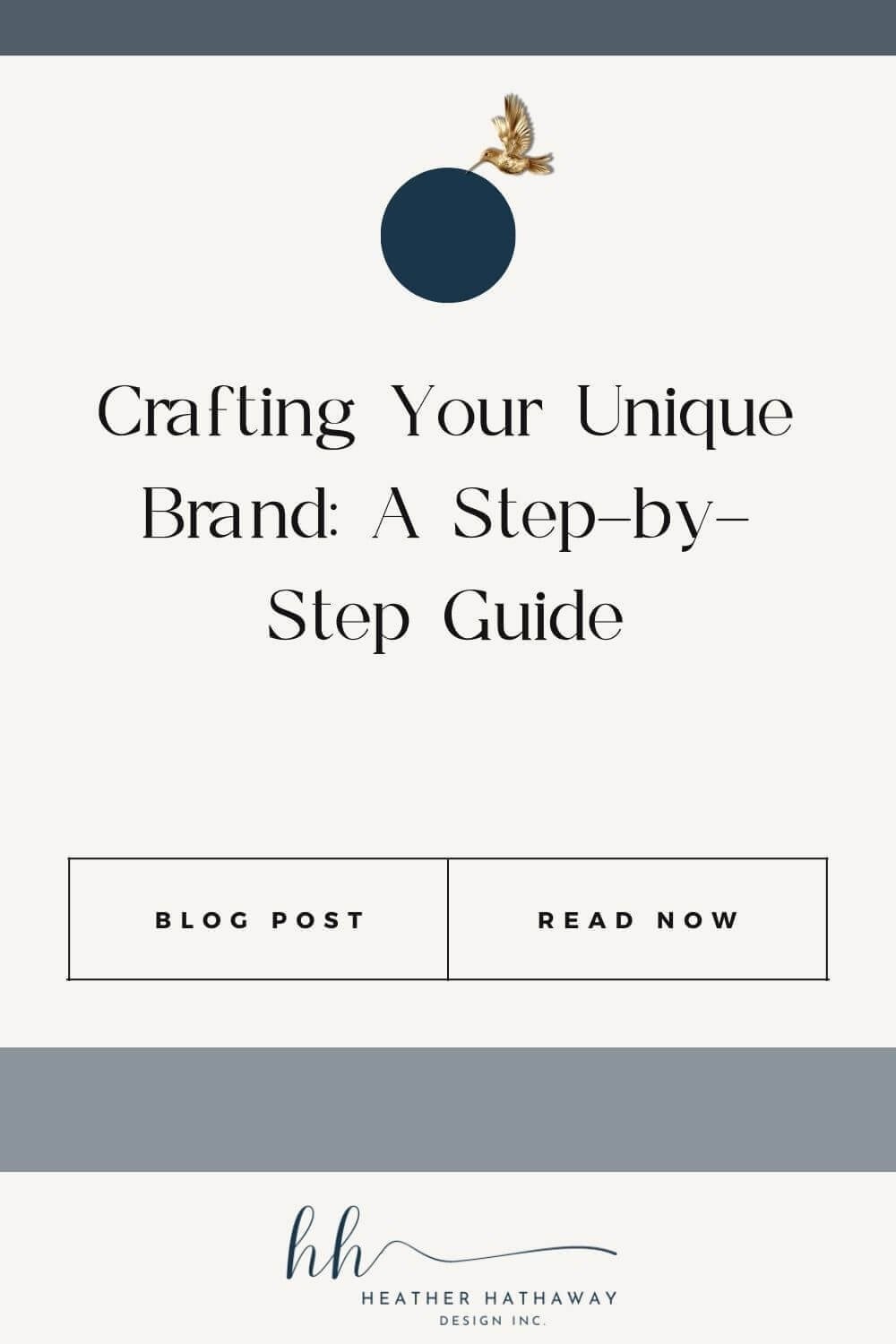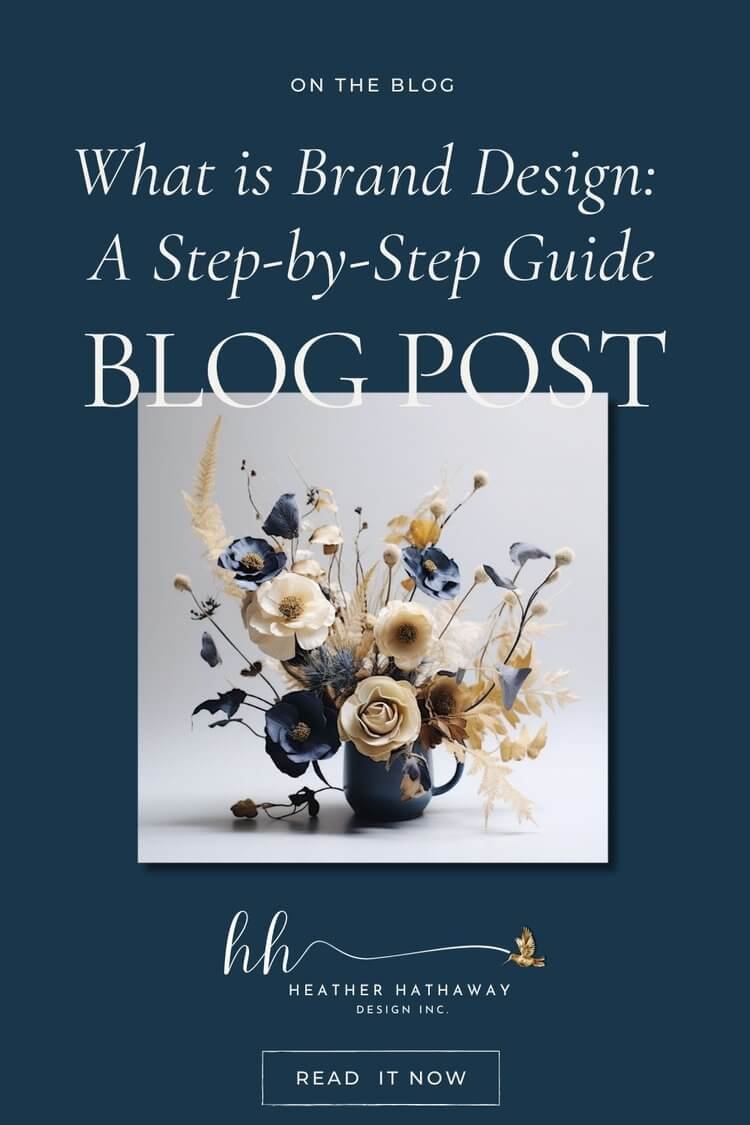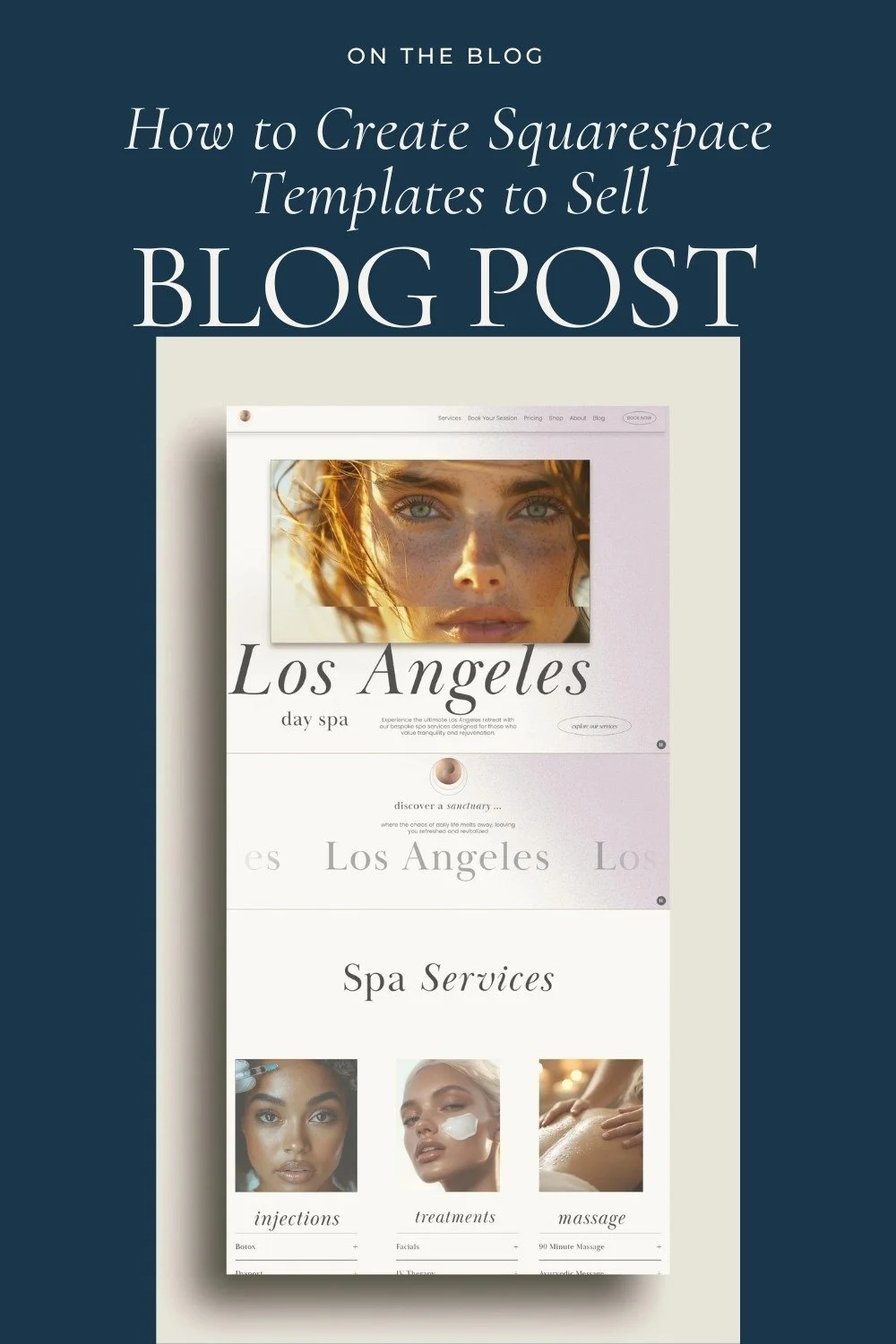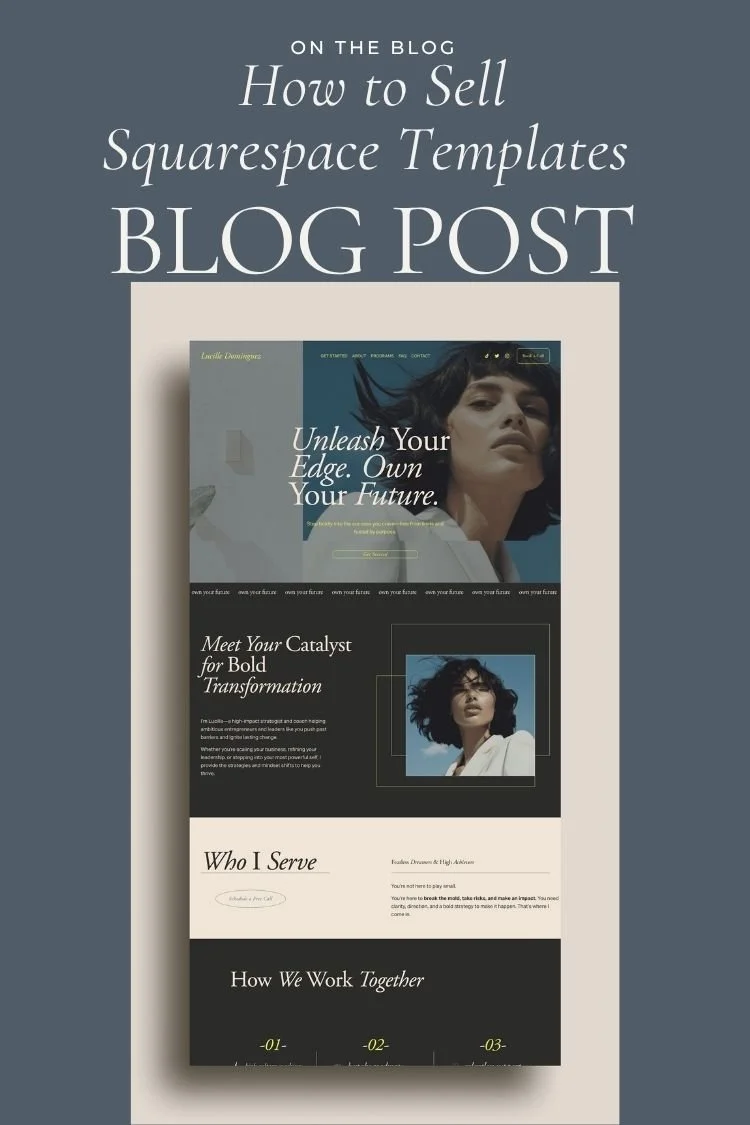What is Brand Design: A Step-by-Step Guide
What is Brand Design?
Brand design is an integral component of a successful branding strategy, as it helps companies differentiate themselves and create a recognizable and memorable brand.
It’s an art form that requires exquisite craftsmanship and a high degree of skill by relying on research, insights, and strategy to come up with something that successfully positions a brand in the eyes of its desired consumers.
The elements involved in effective brand design are multi-faceted; they include:
choosing the right color palette
typography (fonts)
creating powerful logos
illustrations
graphic designs
photos and videos
..all of which help tell your brand’s story and set it apart from others.
Additionally, these visual aspects should be consistent across all facets of the company from product packaging to website design; this ensures maximum impact while creating familiarity.
When done correctly, brand design demonstrates creativity balanced with research-driven insight allowing businesses to grow more efficiently sending out one unified message across all touch points.
This is why it’s essential for businesses to invest in professional brand design services if they want their message heard loud and clear.
Get Your Hands On
My Free TRELLO BOARD
What Elements Does Brand Design Include?
Elevating Your Brand Beyond the Logo
In the vast landscape of brand design, the term "branding elements" is fundamental but often misunderstood.
These elements serve as the essential ingredients, enhancing the appeal of your brand to your target audience and making it as irresistible as possible.
While the logo is crucial, it's merely a fragment of a larger and more intricate branding mosaic.
Logos are used to reinforce the brand's identity and make it easier for customers to recognize. For instance, Apple's sub-logo is the bitten apple.
But again, these are just the visual elements and not the entire essence of a brand.
Keep reading for your guide to unlocking everything your brand should embrace.
In this article, we'll dive into the critical branding elements that contribute to your brand's identity, exploring how they make your brand stand out and leave a lasting impression.
Check Out 5 Ways to Use Midjourney on Your Website or Webdesign Business
How to Develop a Strong Brand Identity: The Pillars of Resilient Branding
1. Messaging
The messaging of a brand is its unique voice, the distinct way it communicates to its audience.
It encapsulates how the business is different and how it can address the challenges faced by the audience. Crafting a purposeful brand message cultivates awareness and enables instant recognition, even before encountering the brand name or logo.
Example: Consider Nike's message, "Just Do It." It encapsulates the essence of empowerment and action, instantly resonating with their target audience.
What message do you want to send to your ideal client that enables them to instantly recognize you and stand out from all the noise? think about it.
2. Values
Every business has its unique set of values, deeply rooted in its history and the beliefs that drive it. Defining a set of distinct brand values provides a solid framework for all your endeavors, allowing you to attract customers who resonate with your approach to business.
Example: Patagonia's emphasis on environmental responsibility and sustainability is a core part of their brand values.
3. Tone of Voice
The tone of voice refers to the manner in which a brand communicates, both in speech and writing. It's crucial to align this tone with your brand's essence to ensure coherence across all aspects. A mismatch between a formal tone and vibrant visuals, for instance, can confuse your target audience.
Example: Innocent Drinks' tone of voice is conversational, friendly, and often humorous, aligning with their brand's persona.
4. Brand Positioning
How you position your brand in comparison to your competitors is vital. Summarized in a few succinct sentences, your brand positioning serves as an internal mantra, guiding every aspect of your business to maintain consistency.
This positioning differentiates you from others, influencing customers to choose your brand instinctively.
Example: Volvo positions itself as a brand synonymous with safety, influencing consumers to perceive it as a secure choice.
Need Help?
Get your website done along with the branding
5. Visual Brand Identity
Lastly, the visuals associated with your brand are key components. From logos and icons to patterns, colors, fonts, and imagery, these elements form your brand's visual identity. Their design and presentation should align seamlessly with your messaging, positioning, values, and tone of voice.
Example: Apple's sleek and minimalist design approach mirrors their brand's image of simplicity and innovation.
With this foundational understanding, let's now talk about more detailed exploration of branding elements.
What are the Different Elements of Brand Design?
In addition to the strategic pillars, there exist crucial components known as branding assets that constitute the visual identity of a brand. These can also be referred to as your style guide.
These elements are fundamental in creating a cohesive and recognizable brand image.
1. Logos
The logo is often seen as the focal point of a brand. It's a potent symbol that represents your business, its values, and the services it offers. A well-designed logo should resonate with your brand positioning and attract your intended audience.
Example: The iconic golden arches of McDonald's symbolize their fast-food empire and global presence.
Logos that are trending currently are actually more simple. Simple text logos are popular with clean lines and a modern feel.
check out one of my client’s logos here where I crafted a simple style, yet beautiful and compelling brand.
2. Sub-logos/Marks
Sub-logos or marks are variations of your main logo that offer flexibility in displaying your brand. They find utility in profile pictures, letterheads, packaging, email signatures, and various other applications, enhancing brand recognition.
Example: FedEx uses a different version of its logo for its FedEx Express division, subtly incorporating an arrow between the "E" and "x" to symbolize speed and precision.
3. Icons
Icons are complementary elements that align with your submarks and primary logo, extending their usability. They find application on websites, social media graphics, and marketing materials, adding a unique touch to your brand representation.
Example: Airbnb uses simple and recognizable icons to represent different property types on their platform.
4. Patterns
Patterns represent a creative way to fully utilize your brand's potential, customizing your online presence extensively. Working with a professional designer can yield custom brand patterns, incorporating hand-drawn elements for a personalized and distinctive touch.
Example: The zig-zag pattern is a distinctive brand element used by Missoni, a high-end Italian fashion house.
5. Colors
Color choices hold significant influence over your target audience's decisions. Different colors evoke distinct emotions and can align with the desired brand image. Crafting a coherent color palette based on a mood board allows you to select colors that resonate with your brand's essence.
Example: Coca-Cola's use of red is associated with energy, excitement, and the brand's dynamic personality.
6. Fonts
Just like colors, fonts possess the power to evoke emotions and convey specific brand messages. Opt for a limited selection of fonts, categorized for headings, body text, and accents, ensuring consistency and readability across all brand materials.
Example: The distinctive font used by Disney is instantly recognizable and embodies the brand's whimsical and magical essence.
Click to read about Things You Need to Check on Your Website Today
7. Images
Incorporating images as brand elements further solidifies your brand's recognition across digital platforms. Utilizing custom or curated imagery that aligns with your brand's aesthetics enhances brand recall and association.
Sometimes, you need to add some zest to your text. How? By breaking it up using visual elements!
Think about joining a stock photo membership or crafting your own in Midjourney. I have a step-by-step tutorial that shows you how.
Example: Nike often uses images of athletes, emphasizing their brand's association with sports, athleticism, and determination.
The Significance of Branding Elements for Potential Customers
Personality Showcase: Ensure that your branding elements showcase your brand's unique personality, making it memorable and relatable to your audience.
Strategic Framework: Utilize these elements strategically to build a strong foundation for your brand, ensuring coherence and consistency across all interactions.
Versatility and Professionalism: Leverage these elements to maintain a professional and recognizable brand presence across diverse platforms and materials.
By understanding and implementing these branding elements effectively, you can transform your brand into a compelling and unforgettable entity, resonating effortlessly with your target audience.
Ready to transform your business through a professionally crafted brand that resonates effortlessly with your audience? Explore our services and witness how we can collaborate to elevate your brand to extraordinary heights.
Take Action with the Design Process: Define or Refine Your Brand
Going on the journey to define or refine your brand is a strategic endeavor that can significantly influence how your business is perceived.
It's akin to crafting the unique personality of your business—an identity that resonates with your audience.
Begin by conducting a comprehensive brand audit, scrutinizing every facet from logo and messaging to visual elements.
Pro Tip: Creating an Emotional Connection with brand design is one of the biggest ways to ensure you build trust with your community.
Assess if they align with your brand values and positioning.
Next, dive into defining your brand's voice, ensuring that your tone aligns consistently with your brand's persona.
Revisit your brand values to guarantee they mirror your current business ethos and aspirations.
Maintain visual consistency by cross-verifying the use of colors, fonts, and imagery across all platforms.
Crafting a unique brand identity is like building a house, where each step is carefully calculated and deliberate to ensure a strong foundation, consistent layout, and an overall pleasing aesthetic.
The journey of defining or refining your brand is a crucial step toward building a strong and lasting brand identity that resonates with your audience.
Let's Recap the things you can check today to ensure your brand is everything that it should be:
Brand Audit:
Evaluate your existing brand elements (logo, messaging, visuals) to identify inconsistencies and areas for improvement.
Define Your Brand Voice:
Describe your brand's personality (e.g., friendly, professional, playful) and ensure that your tone of voice aligns with this persona.
Revisit Your Brand Values:
Ensure that your brand values are current and accurately represent your business ethos. Consider if they need updating based on your growth and evolution.
Visual Consistency:
Cross-check the use of colors, fonts, and imagery across all brand materials to maintain a consistent visual identity.
Seek Professional Design Help:
If needed, engage a professional designer to refine or redesign branding elements for a cohesive and impactful brand image.
Ready to transform your business through a professionally crafted brand that resonates effortlessly with your audience? Explore our services and witness how we can collaborate to elevate your brand to extraordinary heights.















